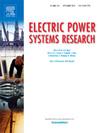考虑输电间隔和源网负荷协同的有源配电网分布式储能优化分配方法研究
IF 3.3
3区 工程技术
Q2 ENGINEERING, ELECTRICAL & ELECTRONIC
引用次数: 0
摘要
针对分布式光伏大规模并网后配电网协调能力不足导致的新能源消费水平低、经济性和稳定性指标不佳的问题,提出了一种基于输电间和源网负荷协同的主动式配电网分布式储能优化配置策略。首先,基于复杂网络理论,引入电力传输分配因子(PTDF)来衡量储能接入配电网后节点的重要性,提出了一种基于节点传输间隔的储能优化选址计算方法;然后,通过改进余弦相似度k -介质聚类方法对DPV输出的不确定性进行量化。以系统日综合成本最小和平均电压偏差最小为目标,建立了包含软开点(SOPs)的DPV和DES协同优化调度的混合整数二阶锥规划(MISOCP)模型。最后,以改进后的IEEE33节点配电系统为例进行仿真分析,仿真结果表明,该系统的可再生能源利用率达到98.29%,总运行成本降低25.98%,验证了该方法的有效性。本文章由计算机程序翻译,如有差异,请以英文原文为准。
Study on the optimization allocation method of distributed energy storage in an active distribution network taking into account transmission betweenness and source-network-load synergy
To address the low level of new energy consumption, poor economic and stability indicators caused by insufficient coordination ability of the distribution network after large-scale grid connection of distributed photovoltaics (DPV), a distributed energy storage (DES) optimization allocation strategy based on transmission betweenness and source-network-load synergy in active distribution networks is proposed. First, based on complex network theory, the power transfer distribution factor (PTDF) is introduced to measure the importance of the nodes after energy storage is connected to the distribution network, and an optimal siting calculation method for energy storage based on the node transmission betweenness is proposed. Then, the uncertainty of the DPV output is quantified by improving the cosine similarity K-medoids clustering method. A mixed-integer second-order conical planning (MISOCP) model for cooperative optimal scheduling of DPV and DES containing soft open points (SOPs) is developed with the objectives of minimizing the daily integrated cost and average voltage deviation of the system. Finally, the improved IEEE33 node distribution system is taken as an example for simulation analysis, and simulation results show that the system's renewable energy consumption rate reaches 98.29% and the total operating cost is reduced by 25.98%, which verifies the effectiveness of the methodology.
求助全文
通过发布文献求助,成功后即可免费获取论文全文。
去求助
来源期刊

Electric Power Systems Research
工程技术-工程:电子与电气
CiteScore
7.50
自引率
17.90%
发文量
963
审稿时长
3.8 months
期刊介绍:
Electric Power Systems Research is an international medium for the publication of original papers concerned with the generation, transmission, distribution and utilization of electrical energy. The journal aims at presenting important results of work in this field, whether in the form of applied research, development of new procedures or components, orginal application of existing knowledge or new designapproaches. The scope of Electric Power Systems Research is broad, encompassing all aspects of electric power systems. The following list of topics is not intended to be exhaustive, but rather to indicate topics that fall within the journal purview.
• Generation techniques ranging from advances in conventional electromechanical methods, through nuclear power generation, to renewable energy generation.
• Transmission, spanning the broad area from UHV (ac and dc) to network operation and protection, line routing and design.
• Substation work: equipment design, protection and control systems.
• Distribution techniques, equipment development, and smart grids.
• The utilization area from energy efficiency to distributed load levelling techniques.
• Systems studies including control techniques, planning, optimization methods, stability, security assessment and insulation coordination.
 求助内容:
求助内容: 应助结果提醒方式:
应助结果提醒方式:


